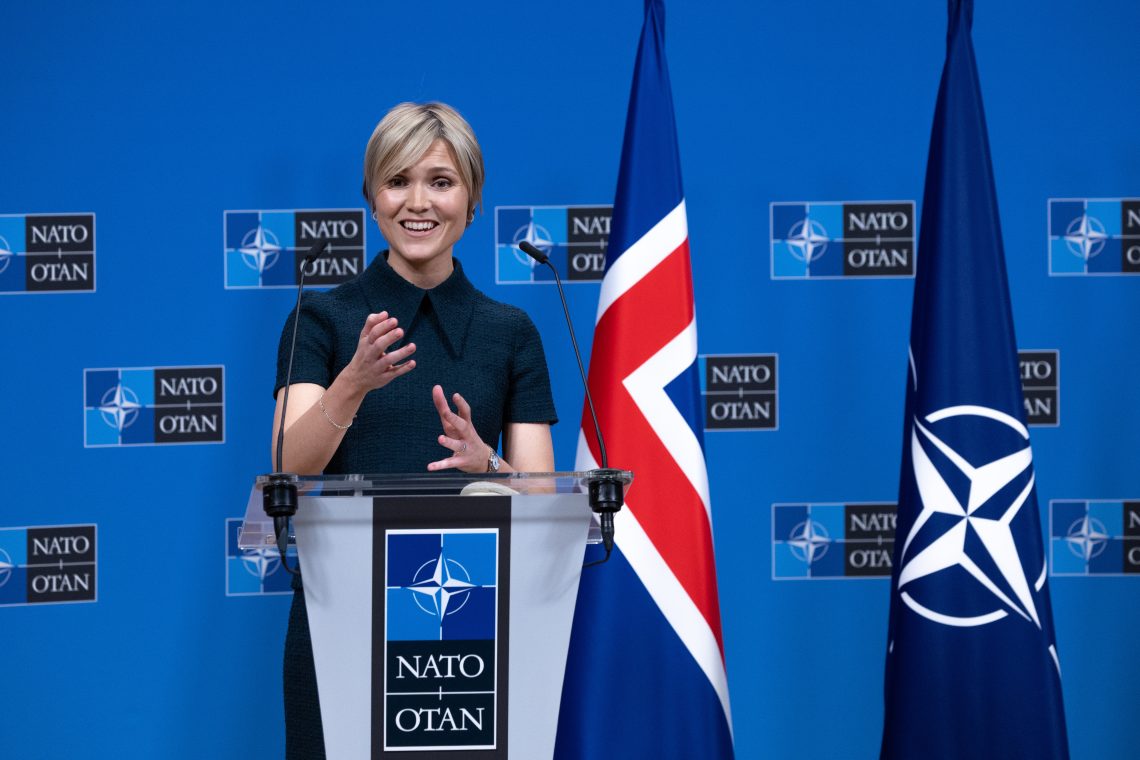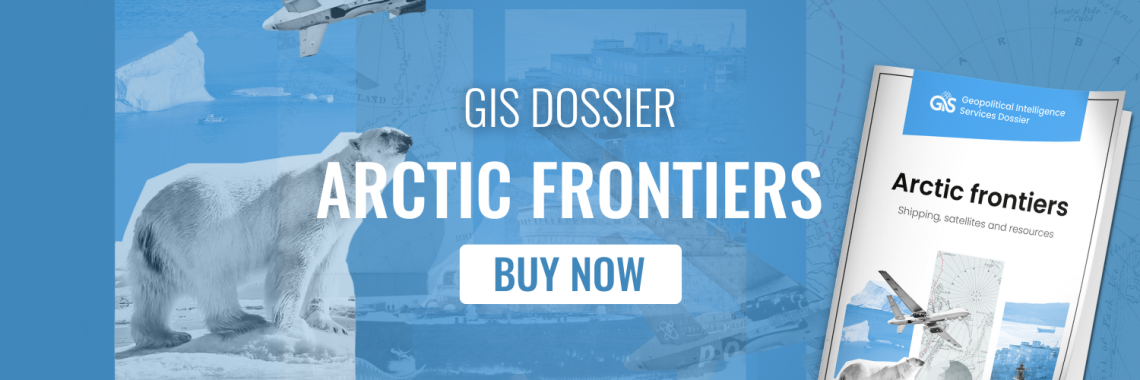Iceland redraws the map of Arctic security
Despite Russian threats and Arctic tensions, Iceland stays cool and strategically strong, playing a crucial role in regional security.

In a nutshell
- Iceland’s location gives it geopolitical importance despite its small size
- Its lack of military increases reliance on NATO and U.S. security agreements
- Reykjavik’s push for EU accession reflects a desire for greater security
- For comprehensive insights, tune into our AI-powered podcast here
In June 2023, Iceland became the first NATO member to officially suspend all embassy operations in Russia. Although it clarified that this did not signify a complete break in diplomatic relations, Russia nonetheless scaled back its activities in Reykjavik. The break was formalized on August 1, when the Icelandic flag was taken down from the embassy building in Moscow, along with the mission’s official signage. The Russian police presence was also withdrawn.
Given the country’s small size and lack of a standing military, it was a classic example of the “mouse that roared.” The move provoked a swift and strong reaction from the Kremlin. The Russian foreign ministry issued a statement saying that the decision taken by the Icelandic authorities “destroys the entire scope of Russian-Icelandic cooperation.” A thinly veiled threat was added: “We will take this unfriendly action into account when shaping our future relations with Iceland. Any anti-Russian measures taken by Reykjavik will inevitably bring about a corresponding response.”
Iceland remained undeterred. Despite being geographically distant from the war in Ukraine, it joined the other Nordic countries in a firm condemnation of Russia’s aggression, and it formulated a policy of support for Ukraine. This includes training Ukrainian personnel, demining, humanitarian aid, mobile field hospitals, defense funding and participation in NATO’s Security Assistance mission.
Most importantly, the country stepped forward as a solid member of what is now known as the Nordic-Baltic Eight – a framework for cooperation between the three Baltic states (Estonia, Latvia and Lithuania) and the five Nordic countries (Denmark, Finland, Iceland, Norway and Sweden).
Nordic nations navigate Arctic tensions
Before Russia’s aggression against Ukraine, Nordic cooperation was an elusive vision. The idea of a Nordic defense union was discussed but never gained much support. The formation of the Nordic-Baltic Eight has played a crucial role in strengthening European support for Ukraine. This alliance has not only stabilized NATO’s northern flank but also introduced fresh perspectives on defense cooperation. An example of this innovative approach is the “Danish model,” which enables Ukraine to produce military equipment in the region.

The growing tensions among major global powers in the Arctic have placed Denmark and Norway in the spotlight. Their prominence can be attributed to their strategic geographic positions and proximity to Russia, which increasingly disregards international law.
As a founding member of NATO, Denmark has also expressed concern about the assertive rhetoric from U.S. President Donald Trump regarding Greenland. His proposals to acquire the territory have been paired with efforts that stir anti-Danish sentiment among the island’s residents, along with implications of potential military actions. Denmark remains exposed to such pressures due to its legacy of colonial mistreatment of the indigenous Inuit population.
On the eastern side of the Atlantic, Norway is facing growing pressure from Russia. It has a long history as an outpost on NATO’s northern flank. In addition to sharing a border with Russia, Norway exercises sovereignty over the Svalbard Archipelago.
In recent years, Russia has carried out a series of provocations against Norwegian control of this territory, which is strategically located near the approaches to Russian naval bases on the Kola Peninsula. Norway faces vulnerability from these provocations because the 1920 Spitsbergen Treaty requires the territory to remain demilitarized and accessible to non-military activities by other nations.

Unique demographics and economic vulnerabilities
Situated between Greenland and Svalbard, Iceland is by far the smallest of the Arctic states. Though strategically located and theoretically tempting for a great power land grab, it does not share the vulnerabilities of its two Arctic neighbors. The government maintains unquestioned sovereignty over its territory, and the population is ethnically homogeneous. Of the roughly 400,000 residents, 86 percent are Icelanders. The remaining population includes 6 percent Poles and 1 percent Lithuanians, with small numbers of other nationalities making up the rest.
In a world where migration and related inter-ethnic conflicts have become major concerns for many governments, the composition of Iceland’s population remains quite unique. The genetic homogeneity, due to long periods of isolation from the outside world and extensive genealogical records, offers opportunities for genetic research. Therefore, there is no concern about outside efforts to provoke anti-Icelandic sentiment. Its vulnerabilities lie elsewhere.
One stems from the dominant role of fisheries in the national economy, a dependency it shares with Norway. Fearing the consequences of joining the Common Fisheries Policy, both countries chose not to join the European Union. It is telling that the only case during the post-World War II era in which Iceland was involved in armed conflict was over fishing rights in the North Atlantic. From 1958 to 1973, the “cod wars” featured repeated confrontations between Icelandic patrol boats seeking to enforce claims to an exclusive maritime zone and British naval vessels protecting their trawlers. In May 1973, an Icelandic gunboat, the Aegir, even fired live shells at the British trawler Everton.
Read more by Professor Stefan Hedlund
- Baltic security: Keeping an eye on the Kremlin
- The future of the Russian Navy
- Greenland standing its ground
Those problems are now in the past. With the 1994 European Economic Area agreement, Iceland, Liechtenstein and Norway became part of the single market, which operates under the principles of the “four freedoms”: the free movement of goods, capital, services and people. In March 2001, Iceland also joined the Schengen Agreement, allowing for unrestricted travel between the island country and other member states. To a small open economy, this was important. However, the recent rise in geopolitical uncertainties has led many Icelanders to question whether being “half in” is enough to ensure their security.
In a June 2024 poll, 54 percent of respondents supported joining the EU, and 74 percent believed a referendum should be held. After the national elections in November 2024, a new center-left government was formed and announced plans to consider resuming EU accession talks that were suspended in 2015. A referendum on the issue is scheduled “no later than 2027.” The decision largely depends on fisheries, but worries about currency fluctuations and ties with the U.S. could ultimately sway the vote.
Iceland’s security and post-financial crisis challenges
A critical vulnerability that has become more apparent during Donald Trump’s presidency is Iceland’s lack of a defense force. National security relies on two key factors: being a founding member of NATO and maintaining the Bilateral Defense Agreement with the U.S. established in 1951. Throughout the Cold War, this arrangement proved highly effective. It played a vital role in the integrated air defense and surveillance system that monitored the High North. NATO aircraft operated from Keflavik Air Base, while Iceland contributed both financially and through personnel support.
Over the past decade, two significant events have shaped developments. The first was the U.S. decision in 2006 to withdraw its military presence from the country. The second was the 2008 global financial crisis, which led to the collapse of Iceland’s banking system.

Although the loss of U.S. military presence was not viewed as an immediate problem, it did increase the attractiveness of an alternative security arrangement. In 2009, Iceland joined the other four Nordic countries in signing a memorandum of understanding to establish a Nordic Defense Cooperation (NORDEFCO) platform aimed at improving security policy dialogue and military collaboration in the region. In 2011, the Nordic foreign ministers signed a joint declaration on solidarity, emphasizing that cooperation among the Nordic countries is natural. The primary effect of NORDEFCO was to lay the groundwork for the current Nordic-Baltic Eight.
The global financial crisis was even more consequential. Besides the financial turmoil, the collapse of Iceland’s then second-largest bank, Landsbanki, had serious foreign policy repercussions. It specialized in high-interest online savings accounts called Icesave, which became very popular in the United Kingdom and the Netherlands. When Landsbanki failed, the British and Dutch governments compensated their citizens, only to learn that Iceland refused to repay. In 2013, the EFTA Court – the European Free Trade Agreement Court which interprets European economic law for Iceland, Liechtenstein and Norway – ruled that the country bore no legal obligation to reimburse them.
Following the financial crisis, Reykjavik sought new trading partners. Notably, it began strengthening ties with China, ranging from a 2010 currency swap deal to a Free Trade Agreement in 2013. The latter raised significant concerns about mounting Chinese influence in the Arctic, including joint oil exploration, involvement in a transpolar transport route, and the purchase of two seaports and real estate to develop a tourist site. Over time, these efforts proved to be underwhelming.
Scenarios
Least likely: Land grab
By far the least likely scenario is a land grab. Iceland sits in the middle of the “Greenland-Iceland-UK Gap,” which Russian strategic nuclear submarines must pass through to reach the Atlantic and then vanish into its vast reaches. American author Tom Clancy’s novel “Red Storm Rising” opens with a fictional attack on the country to depict the onset of World War III. Given Russia’s current military constraints, an attack on Iceland is not a credible threat.
Very unlikely: U.S. military moves
A situation that is nearly impossible to assess is one in which the U.S. seizes Greenland and subsequently extends its control to include Iceland. In a war gaming exercise, both scenarios could be easily executed, given that sufficient forces are already positioned or readily available. While such actions would effectively mark the end of NATO, it is not far-fetched to imagine a U.S. administration acting independently. Motivations for such a bold move could range from gaining access to rare earth minerals to addressing security concerns in the Arctic.
Somewhat likely: Growing Chinese presence
A somewhat more likely scenario is that a rising China further expands its Arctic ambitions by trying to establish a presence in Iceland. What makes the situation seem less realistic now than a decade ago is that the initial overtures were driven more by Iceland’s desire for diversification than by China’s geopolitical ambitions.
As Iceland recovered from the financial crisis, it returned to its traditional trading partners. That might change in the future, but for now, Beijing seems to have enough on its plate elsewhere.
Most likely: Iceland is firmly entrenched in transatlantic architecture
The most likely scenario by far is that Reykjavik remains steadfast. Like its Nordic neighbors, it will need to brace for an increase in Russian hybrid operations. However, Iceland is considerably less vulnerable than both Norway and the Baltic states. An intriguing possibility is the expansion of the EU in the north.
A recent poll has shown Icelanders cooling on the EU, while Norwegians remain negative. Developments in Greenland and the dynamics of relations with Russia could potentially alter this sentiment in both countries. If Norway, in particular, starts to reconsider its position, it may be time for Brussels to consider enlargement not in the south and east but in the north. Alongside a visionary Nordic-Baltic Eight, this could have significant implications for Arctic security.
Contact us today for tailored geopolitical insights and industry-specific advisory services.








